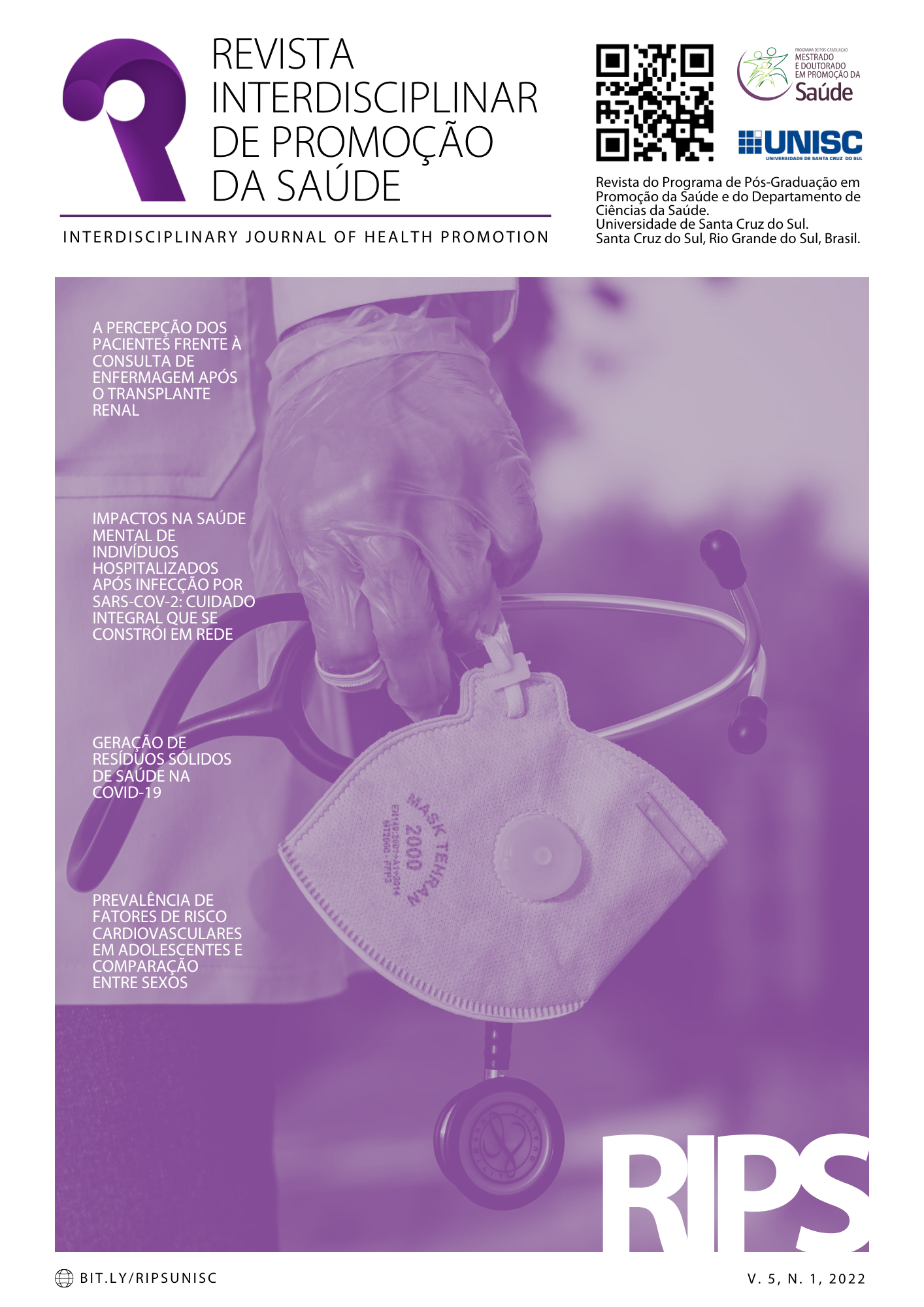Generation of solid health waste during Covid-19
DOI:
https://doi.org/10.17058/rips.v5i1.17725Abstract
ABSTRACT:
Introduction: Due to the coronavirus pandemic, there was a need to develop methods to detect the SARS-CoV-2 virus. Clinical analysis laboratories were the main protagonists in this process, consequently generating a greater volume of contaminated waste. Thus, the probability of contamination in health facilities and damage to the environment, public health, and the local/regional economy increase when health waste is not properly separated, collected and disposed of. Objective: To verify how the coronavirus pandemic affected the generation of health waste in clinical analysis laboratories in the Municipality of Santa Cruz do Sul, RS, Brazil. Method: Analysis and monthly comparison of the volume of waste, frequency of collection and expenses arising from these activities during 2019 and 2020. Results: In 2019, there was a monthly average of waste generation, in the four laboratories surveyed, of 175 ± 150 L (Coefficient of Variation, CV = 85.7%), while in 2020 the average was 277, 8 ± 315.1 L (CV = 113.4%). Thus, comparing the average values obtained, there was a 30.1% increase in waste generation in 2020. Conclusions: This result leads to the rejection of the Null Hypothesis (H0) of this research, and the consequent acceptance of the Alternative Hypothesis (H1), that the coronavirus pandemic increased the generation of waste in clinical analysis laboratories in Santa Cruz do Sul, comparing the years 2019 and 2020. However, there were no additional economic expenses with activities of collection and final disposal of waste. In addition, there was a need for a greater frequency of collection of waste generated for final disposal.
Keywords: Health service waste management; Clinical Laboratories.;COVID-19; Health surveillance.
Downloads
Downloads
Published
How to Cite
Issue
Section
License
A submissão de originais para este periódico implica na transferência, pelos autores, dos direitos de publicação impressa e digital. Os direitos autorais para os artigos publicados são do autor, com direitos do periódico sobre a primeira publicação. Os autores somente poderão utilizar os mesmos resultados em outras publicações indicando claramente este periódico como o meio da publicação original. Em virtude de sermos um periódico de acesso aberto, permite-se o uso gratuito dos artigos em aplicações educacionais e científicas desde que citada a fonte conforme a licença CC-BY da Creative Commons.




